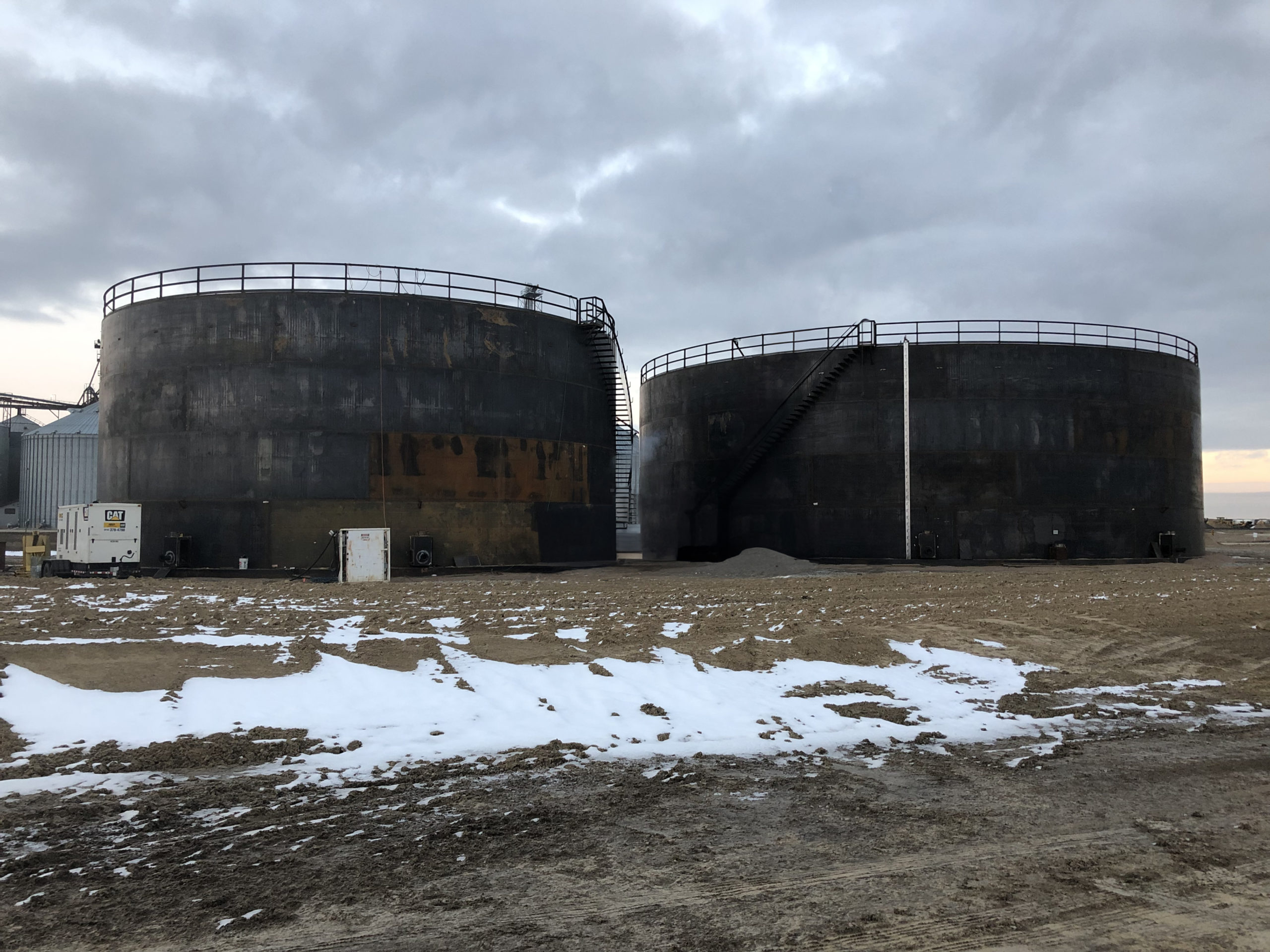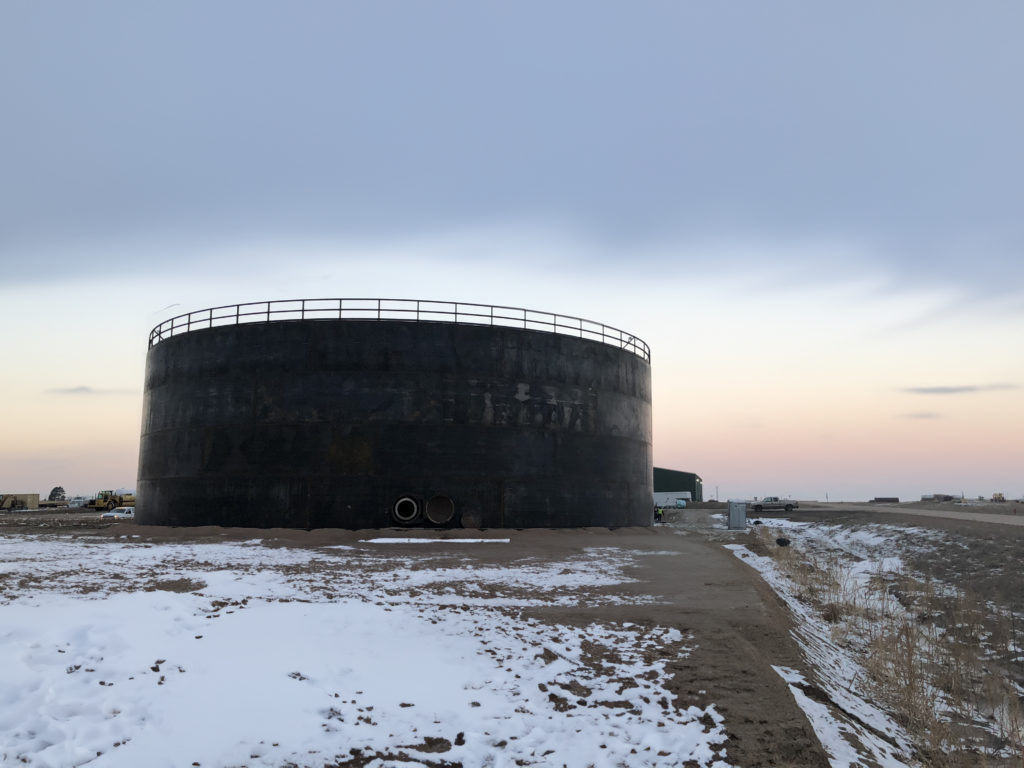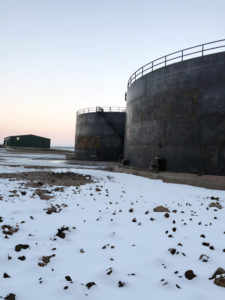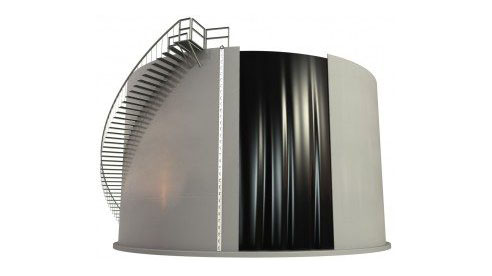
Cold weather can create hidden risks inside your liquid fertilizer storage tanks. Stratification and winter salt salting out often lead to clogged equipment, uneven product quality, and costly downtime. Understanding how to prevent and manage these issues is essential for protecting your fertilizer investment. In this guide, Heartland Tank Services explains why stratification happens, what winter salt means for your tanks, and the proven steps you can take to keep your system running smoothly.
Understanding Stratification and Salting Out
Stratification causes pockets of varying product concentrations within an aboveground storage tank. Cold temperatures cause some liquid fertilizers to salt out, leaving a combination of salted and liquid product in your tank. The salted product can clog sprayers, planters, and applicators, causing significant issues.
32% nitrogen solution and ammonium thiosulfate are the main liquid fertilizers that salt out at lower temperatures. Ammonium thiosulfate salts out at 45° F, while 32% nitrogen solution salts out at 31-32° F. Other concentrations of nitrogen solution have even lower salt out temperatures. 30% salts out at 15° F and 28% salts out at 0° F.
Identifying Salt Content in Your Tank
Is there product salt in your storage tanks? ‘Maybe’ is the answer if you stored 32% nitrogen solution or ammonium thiosulfate in aboveground storage tanks through the winter. The amount of salt varies based on the average winter temperatures, fullness of the tank, and exterior color of the tank.
Preparing Fertilizer for Use after Winter
When the agricultural season starts, the liquid fertilizer stored over the winter remains cool. It’s important not to circulate the product during the winter months or the early spring months when the product is still cool, especially with products that salt out, particularly 32% nitrogen solution. Circulating the product during this time can result in the salt crystals cutting the tank’s internal liner and causing salt to be pumped out, which can wreak havoc with sprayers and applicators.

To turn the product salt back into solution or to de-stratify a tank of liquid fertilizer, you need to draw down the tank to approximately half full. Drawing down the tank can be done in the early spring despite chilly temperatures. The salt sinks to the bottom of the tank. Thus, you can still extract good liquid fertilizer product from the tank without interference of the salt. A stratified tank has the denser, fully concentrated product at the bottom of the tank, so you can be assured that the product you are drawing out is of quality strength.
Allow the Tank to Warm in Sunlight
You need five to seven days of sixty to seventy degree temperatures with the sun directly on the tank. This is necessary to increase the temperature of the product in the storage tank. Increased temperature of the liquid fertilizer reduces the viscosity of the liquid, meaning product will mix faster. It also promotes faster dissolution of the salt.
If you have a PVC internal tank liner, this period of warm weather on the tank is even more crucial if there is salt in the storage tank. The salt crystals can be very sharp and can cut the liner if cold product with salt is circulated. For tanks with liners, it is preferred to have a solid seven days of warm temperatures before circulating the product in the tank.
>> RELATED LINK: Liquid Storage Tank Care
>> RELATED LINK: Heated, Insulated Storage Tank Systems
Circulating the Product
The final step is to circulate the product in the tank. Pull the liquid fertilizer product out through the tank suction and pump it back through the inlet. Let this circulation process continue to run for twenty-four to forty-eight hours with regular supervision. This action makes the product in the tank spin and churn, returning the salt to usable liquid fertilizer solution and creating a consistent concentration of product.
If you have a sparge system in your tank, the better process for churning the product to dissolve salt is still through using the suction and inlet connections on the tank. Most sparge systems simply mix the liquid product without churning the salt on the tank bottom.
Now that the product salt has been dissolved and the product thoroughly mixed, you are ready to use or sell the rest of your liquid fertilizer supply.
 Steps to Limit Salting of Product
Steps to Limit Salting of Product
Preventing any salting of 32% nitrogen solution or ammonium thiosulfate is nearly impossible. However, you can take steps to minimize salt accumulation in your tank after winter.
- First, paint the external portion of the tank a dark color, such as black, dark blue, or dark green. Dark colors absorb more heat, raising the internal temperature of the tank product by eight to ten degrees compared to a light tank exterior.
- Second, store the product in larger quantities. The larger the tank full of product, the slower the product’s temperature will drop in winter. A tank with a capacity of a million gallons or larger is best for storing salt-prone liquid fertilizers. Another approach is to fill the tank with product before winter begins to ensure the tank and product are warmer and can better retain heat within the tank.
- Finally, location plays a key role in how to store salt-prone products. If a tank storing 32% nitrogen solution or ammonium thiosulfate is located north of U.S. Interstate I-80, it should have a capacity of at least one million gallons, filled to capacity for winter storage. If the tank capacity is smaller, consider using 28% nitrogen solution, which has a lower salting out temperature of 0° F.
>> ARTICLE: Heartland Tank Protects Fertilizer from Extreme Cold at The Arthur Companies (from CropLife)
If you have questions about salt or stratification in your storage tank, contact Heartland Tank Services, Inc. at (303) 773-3230 or our engineering partners, W Design at (308) 345-2370.



